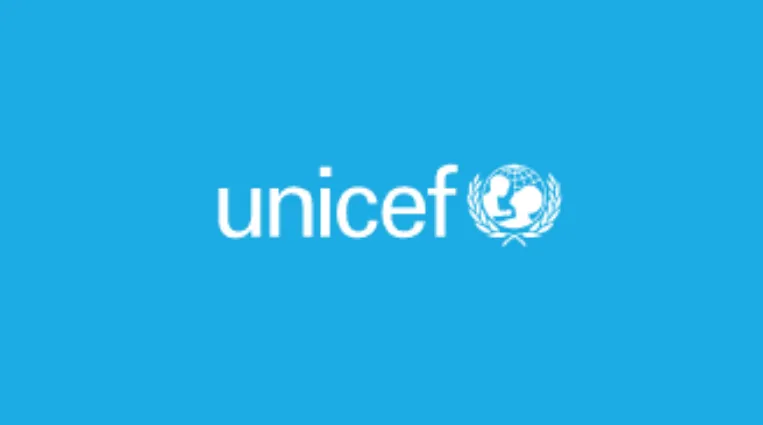UNICEF Myanmar Humanitarian Situation Report No. 5: 1 to 30 June 2022
01 July 2022

Highlights
• Halfway throughout the year, UNICEF has only received 19 per cent of the required financial resources to respond to increasing humanitarian needs. This is severely affecting the capacity to respond. Without additional resources, targeted children in need will not access humanitarian assistance and services.
• The national total of internally displaced people (IDP) has reached an unprecedented 1.1 million, including 758,500 IDPs since 1 February 2021, consequently increasing the multisectoral needs of the displaced communities.
• Direct distribution was provided by UNICEF to IDPs in Loikaw and Demoso townships in Kayah from 7 to 14 June. A total of 16,023 individuals from 3,566 households received much-needed WASH, child protection, education, health and nutrition supplies.
• 1,862 children suffering from severe acute malnutrition have received treatment since the beginning of the year, representing 5 per cent of the target. The nutrition programme has a funding gap of 86 per cent. With additional funding, the targeted 37,503 severely malnourished children could be provided with therapeutic treatment.
Funding Overview and Partnerships
UNICEF Myanmar Country Office is appealing for US$151.4 million to deliver humanitarian assistance to the displaced and host populations across the country. The Myanmar Humanitarian Needs Overview (HNO) estimates that a total of 14.4 million people, including 5 million children, are in need of assistance this year. UNICEF has received generous contributions from the Bureau for Humanitarian Assistance (USAID/BHA), the Government of Denmark, the European Commission/ECHO, the German Federal Foreign Office (GFFO), the Government of Japan, the Korean Committee for UNICEF, the Government of Norway, the United Nations Office for the Coordination of Humanitarian Affairs (UNOCHA), and the Global Humanitarian Thematic Funding. These funds will contribute to delivering much-needed assistance through UNICEF Child Protection, Water Sanitation and Hygiene (WASH), Education, Health and Nutrition programmes and responses to affected populations. Although US$29.13 million has been received so far through the UNICEF Humanitarian Action for Children (HAC) appeal, the funding gap of 81 per cent is severely affecting our ability to provide aid to the targeted populations, especially children in need of humanitarian assistance and services. Continued donor support is critical to continue scaling up the response. UNICEF expresses its sincere appreciation to all private and public donors for their contributions to supporting the children of Myanmar.
Situation Overview & Humanitarian Needs
The humanitarian and security situation remains extremely serious across the country, particularly in the northwest and southeast regions, where active fighting continues to be reported, resulting in continuous population displacement. As of 20 June 2022, the United Nations High Commissioner for Refugees (UNHCR) reported a national total of more than 1.1 million displaced civilians1 , including 758,500 internally displaced people (IDP) across the country since the military takeover of 1 February 2021, in addition to 346,600 IDP estimated to be displaced before the coup. For the past two months, a considerable surge of displacement has been reported in Sagaing, with a total of 395,600 IDPs located within the region, including an estimated 146,000 children and their families with immediate needs for essential services. Clashes and insecurity are currently hindering most partners from accessing the area, and the deteriorating situation is triggering severe concerns as needs are expected to increase, while access remains restricted. The restrictions and barriers on access to internet, in addition to the constraints related to transportation of basic supplies, pose further obstacles to the coordination and distribution of aid in the region.
In the southeast, the overall number of people displaced by conflict remains stable, and new displacements during this period have been offset by reported returns. At the beginning of June, UNHCR reported2 approximately 83,000 IDPs in Kayah and more than 50,000 IDPs in southern Shan. UNICEF accessed Loikaw township in Kayah state, where a significant number of IDPs was reported to have returned. Immediate delivery of humanitarian assistance was provided by UNICEF through the direct distribution modality from 7 to 14 June. A total of 16,023 individuals from 3,566 households in Loikaw and Demoso townships received basic WASH, child protection, education, health and nutrition supplies. UNICEF provided mine risk education through pamphlets to 1,500 families, 340 pregnant and lactating mothers received multi-vitamin tablets covering a period of 3 months, 864 children aged 6 to 59 months received nutrition bowls and feeding messages, 1,400 children aged 5 to 12 years received storybooks about COVID-19 prevention and social skills to reinforce reading capabilities, 2,500 children under the age of 18 received child protection kits, and 33 communities received water purification tablets and knowledge on how to use them in order to prevent waterborne diseases. The overall distribution was achieved successfully and brought considerable relief to the returned communities. UNICEF hopes to build upon this experience to foster continuous access to areas previously out of reach. Unimpeded access remains crucial for the delivery of life-saving assistance and appropriate coverage of essential services for the most vulnerable population, including children, often located in areas with severe operational constraints.
Announcements
21 May 2025
Open letter: Malaysia must lead ASEAN with principle, not hypocrisy, to address the Myanmar crisis

Progressive Voice is a participatory rights-based policy research and advocacy organization rooted in civil society, that maintains strong networks and relationships with grassroots organizations and community-based organizations throughout Myanmar. It acts as a bridge to the international community and international policymakers by amplifying voices from the ground, and advocating for a rights-based policy narrative.